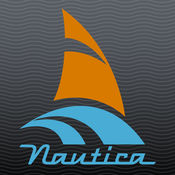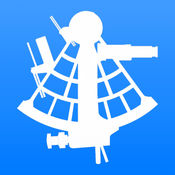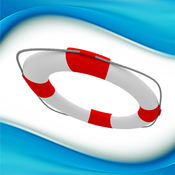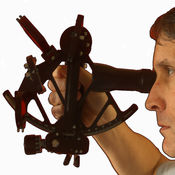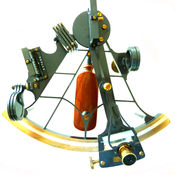-
Category Navigation
-
Size 8.6 MB
The state-of-the-art solution to navigation computations on your iPhone or iPod touch. StarPilot does celestial sight reductions of all bodies using high-precision internal almanac, plus mathematical and graphic solutions for position fixes, great circle, rhumb line, traverse and composite sailings, all current problems, piloting solutions, and much moreincluding lunar distance method of finding GMT from the sky and a unique graphical Sight Planner, and the new Sight Analyzer function that helps you get the most accurate results from a series of sights. Set cursor and click to read the actual height and bearing of a plotted body.- Special fast almanac mode allows full sky plot - Display internal list of 173 stars by name, brightness, and location- Unique BEST SIGHTS function selects the optimum triads of sights for any skySight Reduction- Optional modes for sequential sights using repeated settings or unrelated individual sights- Perpetual almanac accurate to 2100+- Historically accurate almanac data to 16th century- Sight reduction of Sun, Moon, Mars, Venus, Jupiter, Saturn plus Mercury - Sight Reduction of 173 stars plus Polaris- Assumed positions read directly from DR section without extra input- View intercepts (a-values) with or without course and speed corrections- Full input data displayed with results to check for errors- Special center-body mode for artificial horizon data- Dip-short mode for practice at shorelinesCelestial Fixes- Unique SIGHT ANALYZER fits a sequence of sights to the right slope for optimum sight selection- All fixes corrected automatically for course and speed as needed- Fix accuracy independent of DR accuracy in all cases- Plots LOPS with live cursor position display- Fix computed by USNO algorithm in the Nautical Almanac- Zoom in on plot to see where computed fix is located- Fix can be obtained by graphic selection from the LOP plot- Automatic display of DR-to-Fix range and bearing- Optional automatic update of DR after fix- Display new course and distance to stored destination
StarPilot alternatives
Sailing School
Sailing the open seas is the ultimate freedom Wide skies, fresh air, camaraderie, its all there for you and Sailing School app can help you get it. This is the most complete, interactive, engaging, and fun, sailing app ever made. It really helps While youre in the sharing mood, go ahead and throw us a like on Facebook too, THANKS We appreciate your support greatly You inspire us to make more great apps like Sailing School
-
size 1.18 GB
Celestial by Navimatics
Celestial is a complete package for celestial navigation on your iPad, iPhone or iPod Touch. It can perform celestial sight reductions, calculate fixes, present them visually, manage sights on multiple trips and assist in sight planning. Visit http://navimatics.com or search for navimatics in the AppStore for additional navigation products.
-
size 14.9 MB
The Captain's Toolbox
The Captains ToolboxBoat and Ship navigation and seamanship resourceAny yachtsman, weekend pleasure boater or the professional master mariner should not be without this application both on and off the water. BUY NOW youll receive free updates when we add more tools in the future This app replaces several books, manuals, study guides and other resources in one easy to use application. United Nations Law of the Oceans and Sea
-
size 56.9 MB
ezSights Celestial Navigation
Please check out www.ezCelestial.com for a full description of the application and in-app help pages.ezSights is a complete celestial navigation package for the iPhone, iPod touch and iPad. It provides simple interfaces for entering sight parameters, planning the navigational bodies to use and time of day to make the observations, and entering the observations made using a sextant. Integration with iOS data network for setting UTC time from network time using NTP servers.
-
size 26.0 MB
Sight Calc
Sight Calc is a specialized calculator for the that eases the task of calculating sight reductions via the Law of Cosines method. It does not use Nautical Almanac data, so you must first compute LHA (Local Hour Angle) and declination, and determine your approximate latitude. Please report any bugs or suggestions to:[email protected]
-
size 1.5 MB
